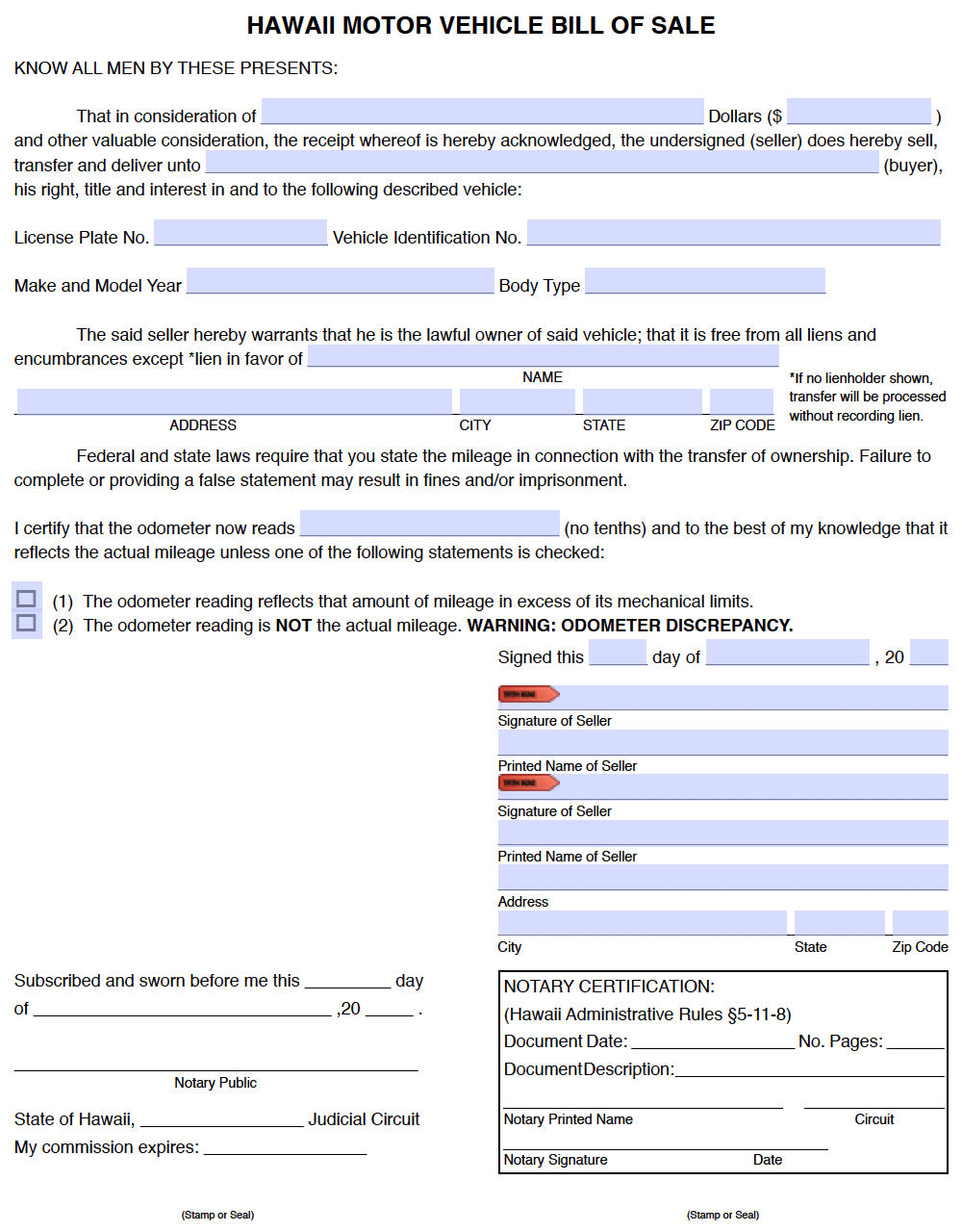The Hawaii DMV bill of sale form does not ultimately transfer ownership of a vehicle from one person to another, but instead functions as a sales receipt providing proof that a transaction occurred. It is only legally dictated in Hawaii if the individual involved in the sale is not listed as a registered owner on the title. Even though the title is the main document used to transfer ownership, it doesn’t hurt to keep a bill of sale on file in case of a future dispute.
How to Register a Vehicle
Need to register your new vehicle? In Hawaii, different counties have different registration requirements. Listed below are the general demands that need to be met by law. Visit your nearest Hawaii Department of Transportation office in the county you reside and be sure to come equipped with:
- A notarized bill of sale with the odometer reading noted.
- The vehicle’s title signed by the new and preceding owner (if there are any lienholders, they must sign as well).
- Proof of a current auto insurance policy in your name.
- The vehicle’s current registration (fees may apply if the registration has expired or is expiring within 45 days of the sale).
- An Application for Registration of Motor Vehicle (online forms available for Hawaii, Maui, and Kauai County).
- Must be able to provide a certificate confirming a passed vehicle inspection.
- Necessary funds to pay the fees associated with registration.
(Reminder: Vehicle must be registered within 30 days of the sale, otherwise charges will occur.)
If you are planning on using your vehicle temporarily in the state of Hawaii and are not going to be around long enough to register, you must apply for an Out-of-State Permit.
Contact the vehicle registration offices in your county for any additional information:
- Honolulu – (808) 448-0312
- Hawaii – (808) 961-8351
- Kauai – (808) 241-4256
- Maui – (808) 270-7363
How to Write
Step 1 – Download in Adobe PDF.
Step 2 – Vehicle Price and Purchaser Name – Enter the monetary amount of the vehicle in word form in the first space, in numerical form in the second (in dollars). You must then subsequently provide the buyer’s name with the claim of releasing interest of the vehicle to the aforementioned individual.
Step 3 – Vehicle Info – Be prepared to record the following vehicle details:
- License Plate No.
- Vehicle Identification No.
- Make and Model Year
- Body Type
Step 4 – Lienholder Information – If there is an active lien attached to the vehicle, you must provide the specified lienholder information below:
- Name
- Address
- City
- State
- Zip Code
If there is no lienholder to be listed, leave this section blank.
Step 5 – Odometer Reading – Insert the most current and accurate odometer reading (no tenths) of the vehicle into the space provided. Check one of the following boxes if it relates to your situation:
- (1) The odometer reading reflects that amount of mileage in excess of its mechanical limits.
- (2) The odometer reading is NOT the actual mileage. WARNING: ODOMETER DISCREPANCY.
Step 6 – Notary – Appear before a notary public who will review the document and witness the signature(s) for approval. The seller(s) must provide:
- Date of Signing
- Signature(s) of Seller
- Printed Name(s) of Seller
- Address
- City
- State
- Zip Code
The notary must provide:
- Date
- Signature
- Date commission expires
- Stamp or Seal
As well as the “Notary Certification”, which includes:
- Document Date
- No. Pages
- Document Description
- Notary Printed Name Notary Signature Date Circuit
- Stamp or Seal



0 comments
Comments are closed.